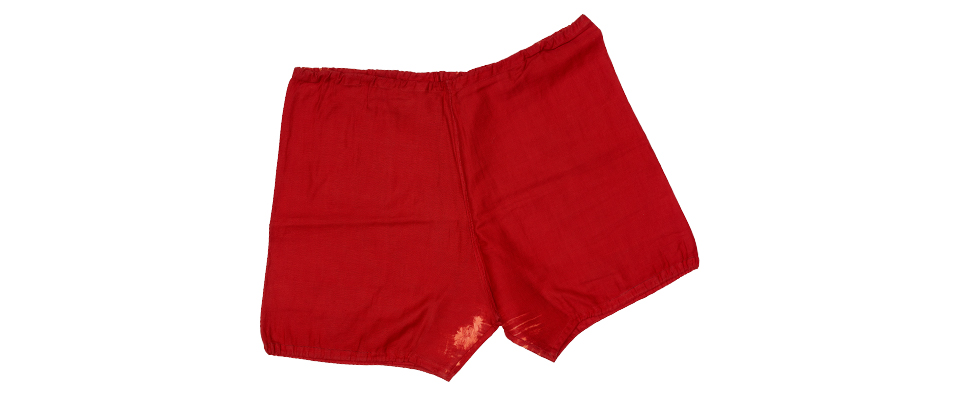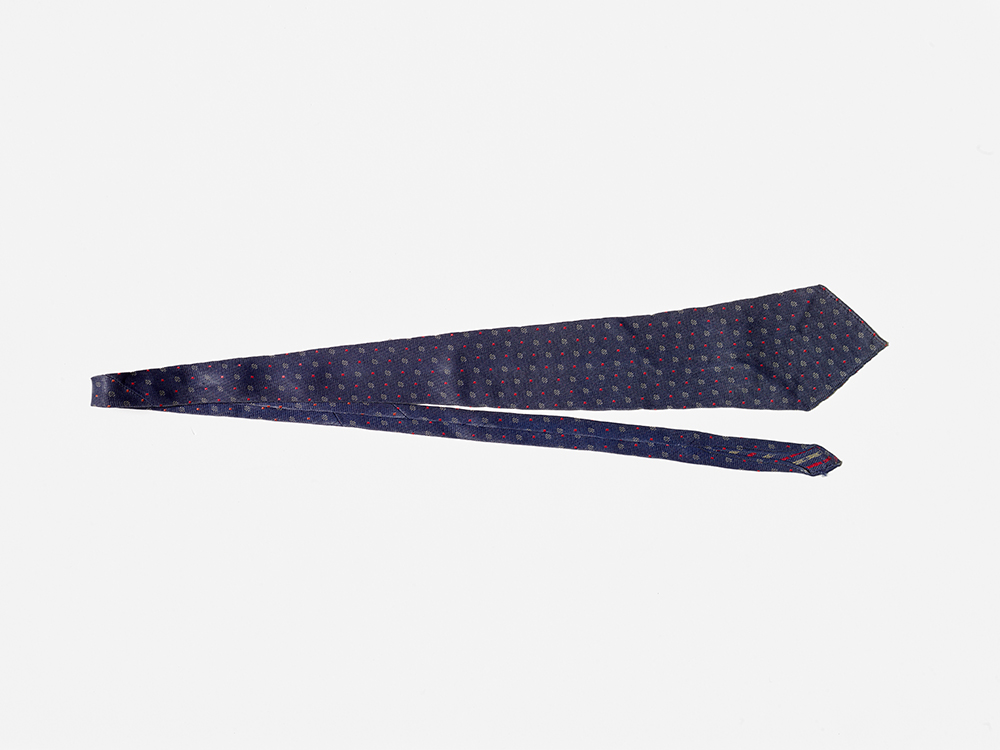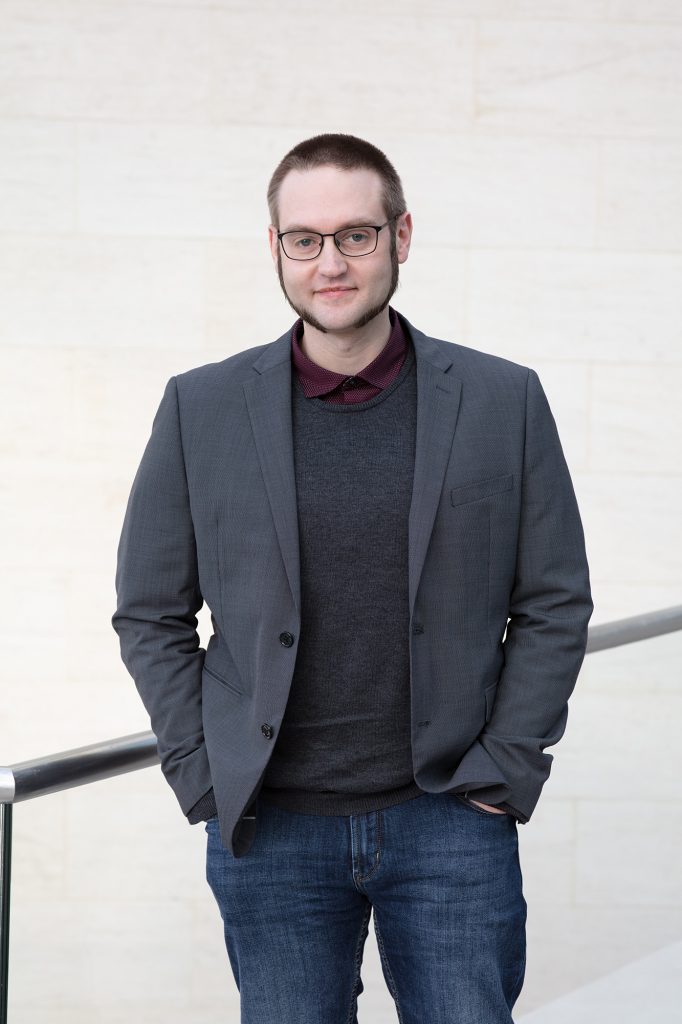
How Ernst Thälmann’s Gym Shorts ended up at the Museum
A Donation from the Institut für Marxismus-Leninismus to the Museum für Deutsche Geschichte
Christopher Jütte | 13 April 2022
One of a museum’s tasks is to undertake ongoing research into the provenance of its objects. International Provenance Research Day on 13 April is an opportunity for Christopher Jütte, a provenance researcher at the DHM, to present an object donated by the German Institute of Marxism-Leninism in 1962 to the precursor of today’s museum.
Since Germany’s reunification in 1990, the DHM’s collection has included the objects once held by the former Museum für Deutsche Geschichte (MdDG). Located in East Berlin, the latter’s collections drew mainly from objects transferred and donated by state institutions and political organizations of the GDR. To be certain none were unlawfully appropriated, these acquisitions are put to the critical scrutiny of the DHM’s provenance researchers. As well as ensuring that the museum is indeed the rightful owner, this process also throws up some interesting stories about the objects themselves.
One such state organization was the Institut für Marxismus-Leninismus (or IML for short), a subdivision of the Central Committee of East Germany’s ruling Socialist Unity Party (SED). In this article, we hope to shed more light on one of the objects donated by the IML.
On 7 March 1962, a ‘public handover ceremony’ was held in the foyer of the MfDG, located in the Zeughaus in East Berlin. According to the event programme,[1] a variety of donors presented objects on this day to the museum. Benefactors included the Dresden painter and graphic artist Lea Grundig, and the East Berlin painter and sculptor Hans Mocznay, who both donated their own artworks. One particularly extensive donation, however, was presented to the MfDG by representatives of the IML. The IML had been established in September 1949, having emerged from the academic research institute at the Central Committee of the SED.[2] In addition to publishing and editing the works of Karl Marx, Friedrich Engels, Vladimir I. Lenin, and (initially, at least) Joseph Stalin, the IML was also responsible for researching the German and international workers’ movement. It was to this end that the IML set about putting together a comprehensive specialist library and archive, with the latter tasked with collecting documents and material objects relating to the history of the workers’ movement.[3] This was presumably the context in which the objects first came to the IML, which later donated them to the East German museum.
Founded in 1952 as the GDR’s national history museum, the MfDG’s mission was to provide visitors with a Marxist view of history. In order to do this, the museum collected and preserved numerous objects previously owned by or associated with significant figures from the history of the German workers’ movement. The IML’s donation included a ribbon from August Bebel’s funeral wreath, the court robe worn by the lawyer Hans Litten, flags of the KPD (the Weimar-era communist party, banned by the Nazis in 1933) and the SED, KPD membership cards, and numerous objects associated with political persecution during the Nazi period. Particularly prominent in the IML’s group donation are objects from the life of the KPD politician Ernst Thälmann. In the appendix of the handover protocol concluded by the MfDG and the IML,[4] dated 2 March 1962, thirteen objects from the Thälmann legacy are listed – including some that on first glance might not seem particularly interesting for a museum collection, such as a pair of red gym shorts and five ties. The reason these objects were considered at all collectible by the IML and the MfDG was because of the special place accorded to Ernst Thälmann in the GDR’s commemorative culture.

As leader of the KPD from 1925 to 1933, Thälmann was the leading German communist politician and parliamentarian during the Weimar Republic and was arrested on 3 March 1933 following the Nazis’ seizure of power. In 1944, Thälmann was executed in Buchenwald concentration camp. In East Germany, Thälmann’s written works and the man himself were venerated in acts of hero worship, with numerous statues and a youth organization subsequently bearing his name.
The political scientist Herfried Münkler considers Thälmann an icon of the GDR’s founding myth. He was ‘the GDR’s number one role model’ and ‘the most important martyr to the communist cause’ in Germany.[5] This was the background against which the MfDG also came to view the devotional objects from his legacy to be particularly worthy of collection and preservation. It explains how objects like the gym shorts came to be displayed in the Museum für Deutsche Geschichte’s permanent collection until 1989.

Why, then, did the IML give away these objects to the museum? Writing in the run-up to the presentation, the then-director of the IML, Ludwig Einicke, justified the decision in a letter to the MfDG:
Our institute has in its possession a rather extensive collection of museum objects from the history of the German workers’ movement. These objects were saved for posterity during the fascist era by members of our party, often at the risk of their lives, and thus preserved for our nation. As the worthy sanctuary of German humanist and revolutionary traditions, the Museum für Deutsche Geschichte was called into being to use its resources to make history relevant to our fellow citizens in the present day. We have therefore decided to hand over our entire collection of museum objects to the Museum für Deutsche Geschichte.[6]
Einicke designated the MfDG as the appropriate place to make these kinds of objects accessible to the wider public and at the same time endow them with ideological significance as ‘revolutionary’ portents. The quotation above features certain stock phrases about ‘surviving’ the Nazi period and ‘saving’ – objects, ideas, or people – from the clutches of the Nazis. Such locutions were frequently used for particular objects accessioned into the collections of the MfDG. This was how ‘relics’ of the workers’ movement and communist party predating the Third Reich and then saved for posterity during the Nazi period came to be considered particularly valuable. We can only speculate what was actually said on the day and whether the small group of attendees at the handover ceremony found time to discuss Ernst Thälmann’s gym shorts during the ‘informal discussion round’ scheduled for the end of the presentation.
References
[1] Programme for the presentation of gifts to the Museum für Deutsche Geschichte, DHM-HArch, MfDG/Rot/002, n.p.
[2] Gräfe, Sylvia, introduction to the online inventory ‘Institut für Marxismus-Leninismus beim ZK der SED’ in the Bundesarchiv, Berlin June 2016. Online: http://www.argus.bstu.bundesarchiv.de/dy30iml/index.htm, last accessed: 28 March 2022.
[3] Ibid.
[4] Appendix to the handover protocol for items donated to the Museum für Deutsche Geschichte, DHM-HArch MfDG/Rot/002, n.p.
[5] Münkler, Herfried, ‘Antifaschismus als Gründungsmythos der DDR. Abgrenzungsinstrument nach Westen und Herrschaftsmittel nach innen’. In: Konrad-Adenauer-Stiftung e.V. (ed.): Der Antifaschismus als Staatsdoktrin der DDR, Sankt Augustin 2009, p. 40. Online: https://www.kas.de/c/document_library/get_file?uuid=d9f3e645-bbd3-ac13-76b1-b571958ec05e&groupId=252038, last accessed: 29 March 2022.
[6] Letter from the directors of the IML, Ludwig Einicke, to the MfDG, 15 February 1962, DHM-HArch MfDG/Rot/002, n.p.
 © Thomas Bruns |
Christopher JütteChristopher Jütte is a historian and a member of the research staff at the Deutsches Historisches Museum. He specializes in the Soviet Occupation Zone (SBZ) and the GDR. |
